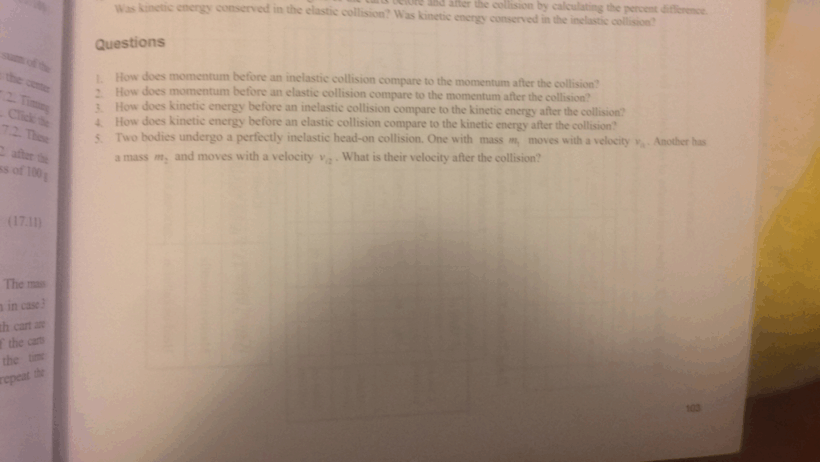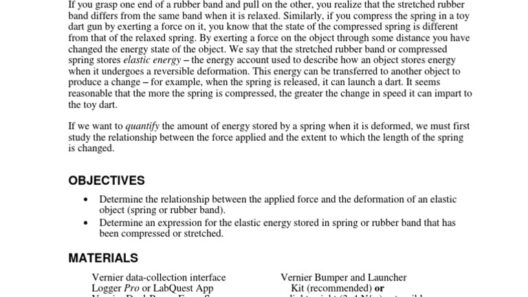To understand the nature of energy conservation during collisions, it is essential to differentiate between two fundamental categories: elastic and inelastic collisions. These phenomena are not merely academic exercises; they have profound implications in the realms of physics, engineering, and even everyday life. Observing a simple collision, like a game of pool or a car crash, may yield a superficial understanding, but a deeper exploration reveals intricate principles underlying these interactions.
Defining Elastic and Inelastic Collisions
At the heart of our inquiry lies the distinction between elastic and inelastic collisions. An elastic collision is characterized by the conservation of kinetic energy. During such an event, objects collide and then separate without any lasting deformation or generation of heat. Think of marbles clashing; they bounce off each other, retaining their total kinetic energy. Mathematically expressed, both momentum and kinetic energy before the collision equal those after the collision.
Conversely, an inelastic collision represents a scenario where kinetic energy is not conserved, although momentum remains constant. In this type of collision, the colliding bodies may deform or stick together, dissipating some of their kinetic energy into other forms, such as sound or thermal energy. A classic example is a car collision, where significant energy is lost in crumpling the vehicles and generating noise.
Momentum: The Constant Companion
Before delving deeper, it is imperative to understand momentum. Defined as the product of an object’s mass and velocity, momentum is conserved in all types of collisions, whether elastic or inelastic. This principle stems from Newton’s laws of motion and is crucial in analyzing and predicting outcomes. Consequently, while energy conservation may change based on the nature of the collision, momentum will unwaveringly hold its ground.
Understanding Energy Transformation
In an elastic collision, both momentum and kinetic energy are preserved, an intriguing harmony of conservation laws. In contrast, during an inelastic collision, kinetic energy is transformed rather than destroyed—transitioning into forms that do not contribute to the motion of the objects involved. For instance, when two cars collide, the kinetic energy of their motion could be transformed into sound energy, heat, and irreversible changes in shape.
This transformation of energy begs the question: what happens during these collisions? The key lies in the molecular interactions at play. In elastic collisions, the forces between the colliding bodies act for a very short duration, allowing the objects to bounce off each other with minimal energy loss. In inelastic collisions, the forces persist for a longer period, resulting in deformation—causing energy to dissipate in less useful forms.
Real-World Applications
The implications of these principles extend beyond theoretical physics, affecting various fields, from automotive safety to sports technology. For instance, the engineering behind crumple zones in vehicles is a practical application of inelastic collision principles. By designing cars to absorb kinetic energy through deformation, safety is enhanced for passengers during a collision, showcasing a conscious adaptation of energy transformation for protective measures.
In the realm of sports, understanding these collisions can lead to improvements in equipment. When players interact with balls or other equipment, knowing whether that interaction is elastic or inelastic can significantly influence design decisions. A basketball, for example, is engineered to create an elastic collision with the ground, allowing players to easily rebound off the floor.
Scientific Investigation and Experimentation
Educational establishments often conduct experiments to elucidate these principles. Simple setups using pendulums or collisions within simulations help visualize elastic and inelastic interactions. Observing how kinetic energy behaves in these instances piques curiosity and invites deeper scientific inquiry.
Through experimental validation, one can vividly observe momentum conservation in both collision types, yet the disparity in energy conservation captivates students and professionals alike. Controlled experiments can serve as gateways to broader discussions on energy conservation laws, fostering a more profound appreciation for the complexities of physical interactions.
Philosophical and Ethical Considerations
The principle of energy conservation speaks not only to the scientific community but also resonates on philosophical and ethical levels. As society grapples with broader issues like climate change and resource depletion, understanding our energy systems becomes vital. The optimization of energy use in mechanical systems—be it in cars, factories, or household appliances—is paramount for sustainability. Observing how energy is conserved or transformed can drive innovations that respect our finite resources.
Moreover, a society attuned to these principles may foster a collective consciousness that values conservation and renewable solutions. Engaging with the science of energy can inspire individuals and communities to pursue efficiencies that mitigate environmental impacts, illustrating that our interactions with physical laws are reflections of larger societal values.
Conclusion: Fostering Appreciation for Energetic Interactions
The exploration of whether energy is conserved in a collision unveils a layered reality. While momentum remains a constant, the divergence between elastic and inelastic collisions presents contrasting paradigms of energy behavior. Diligent observation and investigation into these interactions enrich our understanding of the physical world while simultaneously highlighting the ethical imperatives we face as stewards of our environment. The fascination with energy conservation during collisions is not merely rooted in physics; it derives from an appreciation of the nuanced yet fundamental ways in which we can harmonize our technological pursuits with the principles that govern our universe.







